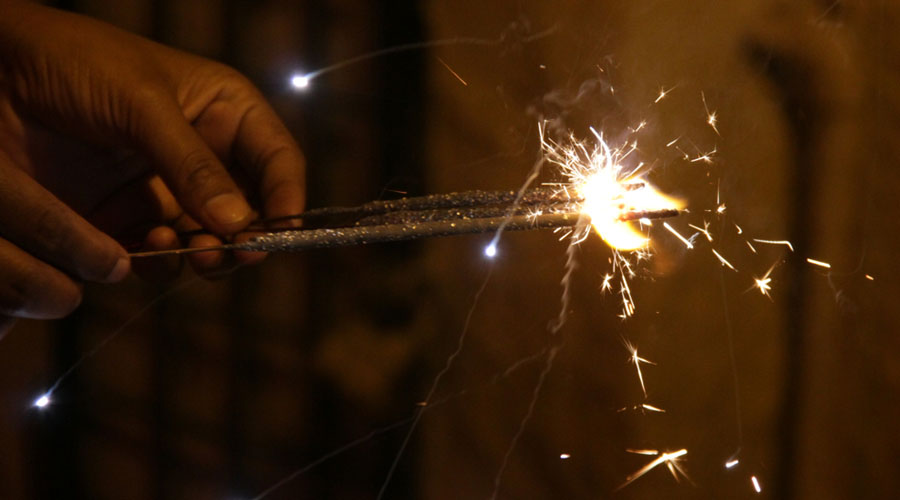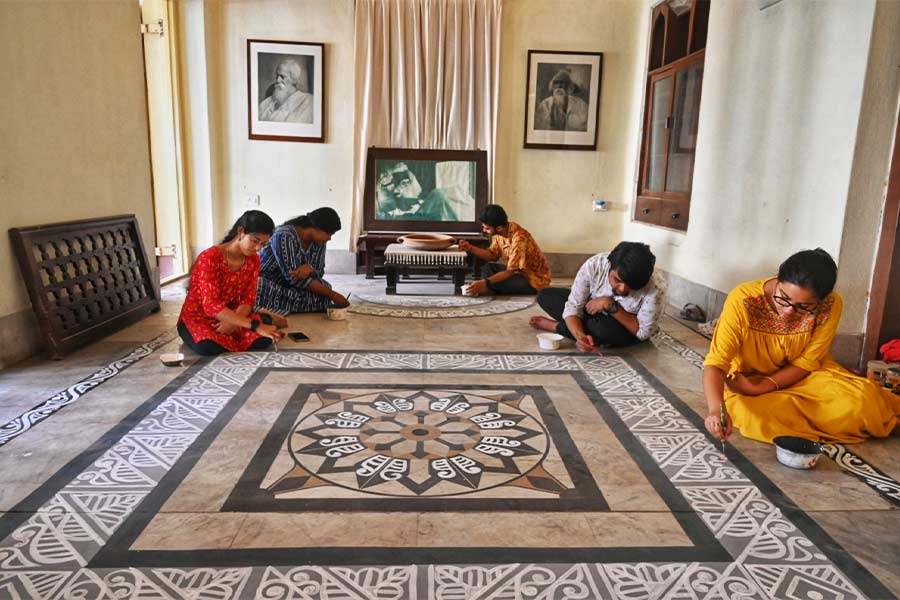Across India, Diwali is known as the festival of lights. During Diwali, a new moon night, the whole country is lit up in colourful decorative lights and diyas.
This year, in addition to the dark night because of the occurrence of the new moon, a small part of October 25, just before sunset, will have marginally diminished daylight because of a partial solar eclipse.
During new moon (Amavasya) the sun, moon and earth almost comes in a linear configuration, whereby from earth we can see the moon without any sunlight falling on it. But at times, as on October 25, the sun, moon and earth will almost be on the same plane and as a result the moon will appear to cover the Sun partially for a period of time causing a partial solar eclipse.
A solar eclipse occurs when the moon is positioned between the earth and the sun and casts a shadow over earth. They can only occur during the phase of the new moon and make for an interesting celestial event. This is the second partial solar eclipse of 2022. It will be visible from most of Europe, northern Africa, the Middle East, and parts of Asia. The partial solar eclipse will begin at Iceland at around 14:29 hrs. IST, will be seen at its maximum from Russia at 16:30 hrs. IST and will end at around 18:32 hrs. IST over the Arabian Sea.
The eclipse will not be observed from the North-eastern India because of the eclipse occurring after the sunset in those regions. The Eastern part of the country will see the partial eclipse only marginally, that also during the sunset. The northern and western part of the country is a better location to observe the partial eclipse with a better view and for a longer period of time.
In Kolkata, the partial eclipse will begin at around 4.52pm, the maximum occurring at 5.01pm and will ceased to be seen at 5.03pm at the sunset. Interested people with a clear view of the western horizon can only see the fleeting glimpses of this eclipse, very low in the horizon just before few minutes of the sunset.
Even at the maximum eclipse, only 4 per cent of the lighted disc of the setting sun will be covered by the moon. So, it will not be appreciable to most of the people. Siliguri in West Bengal almost defines the boundary of the eclipsed region with the eclipse occurring between 16:41 and 16:59 hrs, again very close to the western horizon. At the maximum eclipse there at 16:56 hrs. the Sun will be covered by the moon’s disc by about 8.91 per cent.
For New Delhi, the eclipse will commence around 4.29pm and end with the sunset at 6:09pm with the maximum being at 5:42pm when the sun will be obscured by the moon by an amount of only 24.5 per cent.
In Srinagar, the eclipse begins at 16:14, becomes maximum at 5.20pm and ends at 5.45pm with the sunset. Jaisalmer, at the western part of the country will experience the eclipse from 4.26pm to 6.09pm with the maximum at around 5.30 when the disc of the evening sun will be obscured by 42.5 per cent.
The western shores of India will present a better and longer view of the eclipse compared to the east. In Mumbai, the eclipse begins at 4.49pm, becomes maximum at 5.42 and ends at 6.09pm, when the sun appears to go down the Arabian Sea. At maximum eclipse timing of 5.42pm, the sun’s disc will be covered by about 24.5 per cent.
In southern and central India, the eclipse will be again observed just before the sunset. In Bangalore, the eclipse begins at 5.12pm, reaches its maximum at 5.49pm with an obscuration of 10 per cent and ends at 5.55pm during sunset. Chennai will have the eclipse from 5.14pm to 5.44pm.
Even if the degree of the partial eclipse is not appreciable in most of the country, there will be sky enthusiasts who will be eager to observe and photograph the phenomenon. Extreme precaution has to be taken by everybody who wants to observe this cosmic event. Since the sun will be partially eclipsed and that too not by an appreciable amount, the sun’s rays can be harmful to the eye. One has to take care and use only certified mylar solar filters and No. 14 Welder’s glass to observe. Sunglasses, exposed X-ray films or any other methods should strictly not to be used because it can cause irreparable damage to the eye.
The next major solar eclipse visible from India will be an annular eclipse on May 21, 2031, when the annularity can be observed from a narrow patch of land in south India and the next total solar eclipse visible from India will be on March 20, 2034, the totality to be observed from the northernmost part of Kashmir.
On both occasions, the whole country will observe a partial eclipse of varying magnitude depending upon its geographical location. A partial eclipse can be seen from the northern part of India on June 1, 2030.
(Debiprosad Duari is director, Institute of Astronomy Space and Earth Science, Kolkata)






